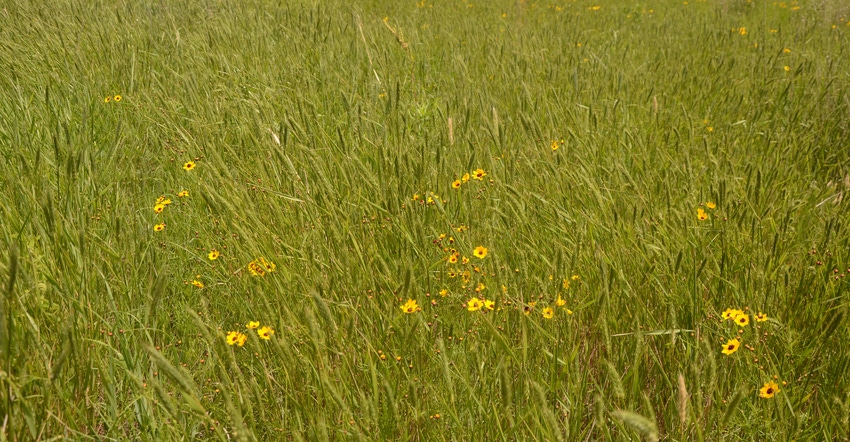
Crop production and conservation don’t have to exist in separate silos. In fact, the two can work well in tandem. That’s a big part of the objective behind Pheasants Forever’s Precision Conservation Initiative. The program, which started in Iowa in 2015, has now expanded across the Midwest, as well as several states in the Southeast and West.
Pheasants Forever’s Precision Conservation Initiative uses spatial and budget information on top of yield data to help growers identify problem spots in the field, and identify and implement alternative conservation practices that help improve the field’s average yield and overall profitability. And, it’s possible to show the potential revenue improvement from implementing those practices.
“When you look at some of those red parts of a field in a profitability map, it’s not showing you it’s 50 bushels behind. It’s showing you in dollars and cents that that part of the field is revenue negative,” explains Josh Divan, Pheasants Forever precision ag and conservation specialist. “It’s not uncommon for some of the folks I’m working with, in these red areas, they might be losing $200, $300, $400, $500 an acre.”
Identifying problem spots
The program involves getting to know the farmer and the farm, understanding their objectives and crop rotations, and gathering and ground-truthing data — ideally, multiple years’ worth of data to establish a good baseline. This includes yield and profitability maps, and other geospatial data layers like elevation maps, soil maps and as-applied data. Another key piece is crop budgets — most Iowa growers use Iowa State University’s crop production tools and crop budgets.
Of course, some growers may be apprehensive about sharing sensitive data. While the program works with all software platforms and all types of data, Divan points out most platforms allow growers to share and limit access to data as needed.
Once the data is gathered, it’s used to calculate the grower’s breakeven costs for a given field, and evaluate areas of the field that are perennial problem spots for low yield and low profitability.
“There are parts of the field where it’s not ‘if,’ it’s ‘when’ they don’t produce a crop,” Divan says. “In the Prairie Pothole Region, it’s usually depressional wetlands and ponds that hold water long enough to damage a crop. The same is true of any crop planted along a creek, stream or river. Those areas definitely show themselves on these profitability maps. Other areas are lighter, sandier soils on uplands, and headlands – they often glow red on yield and profitability maps because of compaction.”
Once the problem spots are identified, Pheasants Forever works with the grower to identify possible alternatives — including programmatic and non-programmatic alternatives. Programmatic options include programs administered by USDA’s Natural Resources Conservation Service, among other programs at the state and local level. For growers not interested in enrolling in a program who want to provide their own solution, there are non-programmatic options. This might include starting small-grain production, raising cover crop seed, or growing a perennial crop for biomass production.
“There are alternatives that involve taking areas currently in corn and soybean production that aren’t carrying their weight and converting those areas to hay land, seeding alfalfa or another lower-cost, lower-risk crop,” Divan says. “Some growers have added those acres to their pasture system, giving them more acres to grow forage, and also give their other pasture acres a longer rest.”
Implementing alternative practices
Divan notes an example in the Prairie Pothole Region of north-central Iowa. This grower dealt with significant crop damage from wetlands — covering about 10.5 to 11 acres on the northwest corner of one field. Once the problem area was identified, the grower enrolled those acres in NRCS’s Farmable Wetland Program. Divan notes the field’s average yield increased significantly in the following years.
“This field actually broke 250 for a field average. It wouldn’t have happened without enrollment of that part of the field,” he says.
Of course, the overall return on investment depends on the situation, and how large and detrimental problem areas are. But Divan notes that among the growers he’s worked with in Iowa, implementing an alternative practice in place in part of the field can improve the field’s ROI by anywhere from 4% or 5% to more than 20%.
“We often run into this school of thought that a farm or field is either going to be 100% row cropped or it’s going to be a 100% enrolled into a program,” he says. “With data, we can create a prescription, no different than a seed or fertilizer prescription. It’s a perennial grass prescription on the part of the field where the data shows it’s the best fit. Instead of enrolling an 80 into a program just because it has 20 acres with poor yields, we can overlay a custom alternative on that part of the field and help give the grower an alternative that delivers more return per acre across the whole field.”
About the Author(s)
You May Also Like






